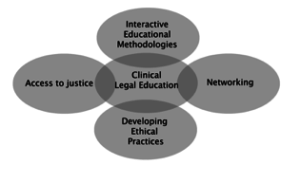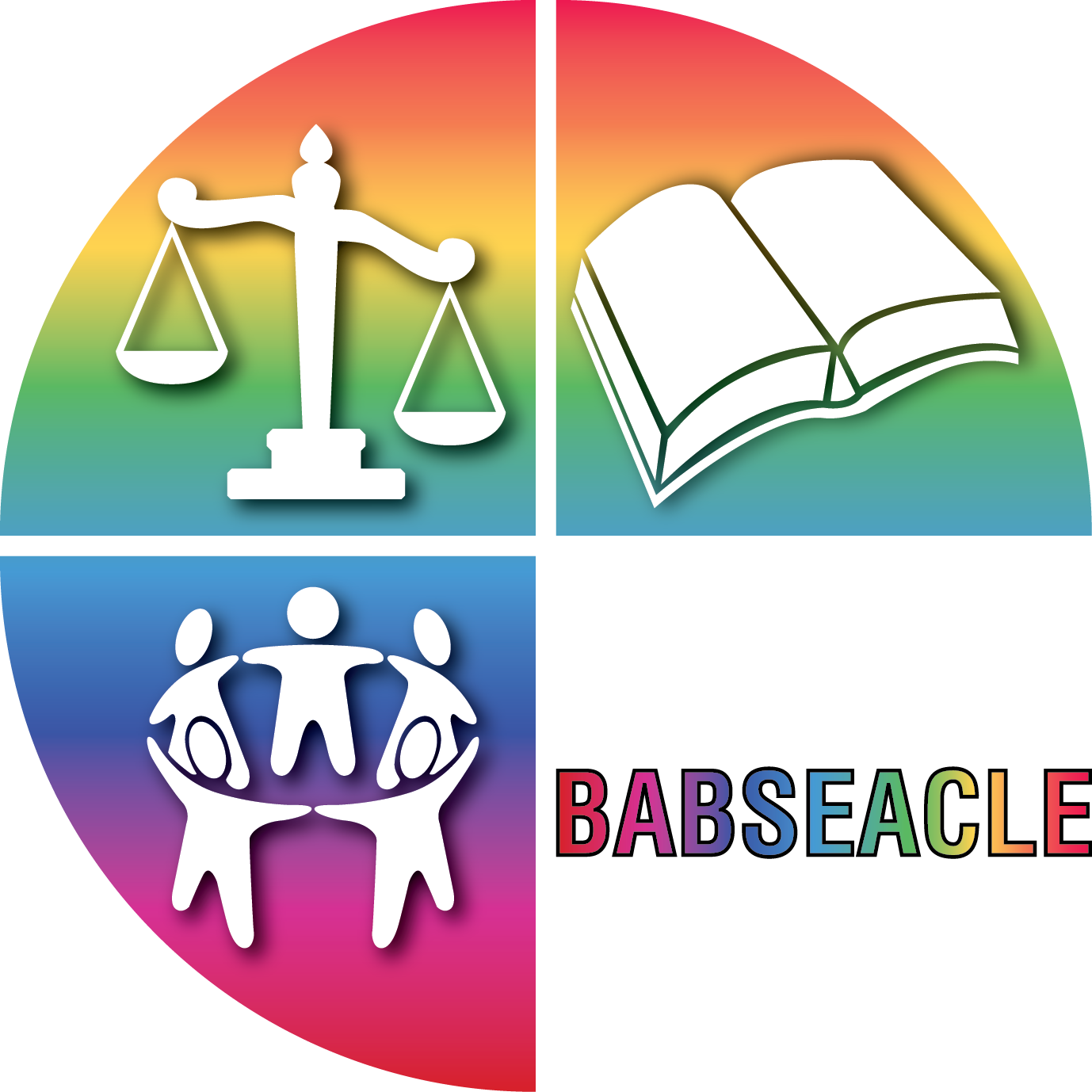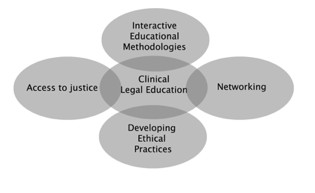By Kevin Morley BABSEA CLE Co-director.
The directors of BABSEACLE first discussed the idea of writing a Clinical Legal Education (CLE) textbook for learners of English way back, in 2007 or 2008. We already had at least two audiences to use it: university law students and groups actively interested in CLE concepts and methodologies. The idea was simple. Many students might know about CLE but are not able to communicate their ideas on the subject to others in English. As there is a huge demand for such a textbook both here in South East Asia and beyond, we wanted to create The CLE English Skills and Practice Workbook. It would enable its users to develop simultaneously their understanding of CLE and their communication skills in English.
By 2012 the time had come to stop talking and actually compose it. When we finally started out the first idea was to base the  book on material developed for CLE workshops. The premise was that very successful BABSEACLE workshop materials already existed. They had already been tried and tested. All we had to do was codify and organise them for the readers. Or so we thought. The process proved far more difficult. As the author of the book I had to transform materials used in dynamic learner-centred workshops into The English Skills and Practice Workbook. The fundamental problem was that the BABSEACLE CLE Workshop Training Manual, which has already been extensively used in workshops in SE Asia with great success, relies predominantly on verbal interactions. It also relied heavily on the expertise of the BABSEACLE trainers to deliver legal content. What to do?
book on material developed for CLE workshops. The premise was that very successful BABSEACLE workshop materials already existed. They had already been tried and tested. All we had to do was codify and organise them for the readers. Or so we thought. The process proved far more difficult. As the author of the book I had to transform materials used in dynamic learner-centred workshops into The English Skills and Practice Workbook. The fundamental problem was that the BABSEACLE CLE Workshop Training Manual, which has already been extensively used in workshops in SE Asia with great success, relies predominantly on verbal interactions. It also relied heavily on the expertise of the BABSEACLE trainers to deliver legal content. What to do?
We needed a fresh start. So we assembled an international team of BABSEACLE team members and interns in Singapore, Chiang Mai and Hanoi and pooled our diverse talents: an English Language textbook writer, a CLE trainer, a law graduate and a graphic artist.
Six months later we now have a prototype, stand-alone textbook for CLE English course. It can be used in a variety of contexts giving the book the widest possible readership and, by extension, greatly extending access to justice. The CLE English Skills and Practice Workbook now provides opportunities to react in speech and writing to written texts relating to basic CLE concepts: access to justice, law clinics, preparing and teaching Community Legal Education workshops, pro-bono lawyering, interview and counseling skills. In this way users can develop knowledge and English communication skills specific to CLE.
The final book will be divided into 12 chapters each one dealing with a specific topic. The 8 texts in each chapter are arranged systematically to deal with these core concepts providing approximately a total of 100 hours of CLE English tuition. The book is designed to appeal to a variety of learning styles and, as you can see, employs extensive visual stimuli, photographs, cartoons and diagrams to help students to understand the concepts and legal language of the texts.
Each text within a chapter promotes pre-reading while-reading and post-reading activities. Oral interaction comes in at least two places: warm-up and focusing “Before you read” activities at the start of every chapter/ section; summative discussions and activities at the end of each text. These give opportunities for summative analysis and discussion of the concepts explored within each text. The reading exercises related to each text give the readers access to the specific language of the text and allow them to manipulate concepts related to the subtopic in English. These reading activities either focus on a specific grammatical point or on comprehension of the ideas within the text. Discussions arising from engagement with the texts provide opportunities for structured writing practice. Using the oral and reading exercises, learners will have opportunities to undertake focused note taking before attempting writing tasks on the CLE topic under review.
To further promote language development, I have used “real world” texts, wherever possible. One potential criticism of this  communicative approach is that it involves moderately high levels of literacy in English and not all readers will have this level. However, I have assumed that CLE students are highly motivated and will wish to engage with the English language at an appropriate conceptual level. The English Skills and Practice Workbook therefore, exploits the principle that the students bring legal knowledge and experience in their first language to the texts. The workbook exploits this prior knowledge through the use of warm up and focusing activities which allow the reader to contextualize the language being learned. Unsurprisingly, some legal writing is very technical, and I must say as a non-lawyer, almost incomprehensible to the outside world. So, in extreme circumstances, if the original text was very informative I have taken liberties and edited the language, but not the concepts, into Plain English to meet the linguistic level of the potential readership.
communicative approach is that it involves moderately high levels of literacy in English and not all readers will have this level. However, I have assumed that CLE students are highly motivated and will wish to engage with the English language at an appropriate conceptual level. The English Skills and Practice Workbook therefore, exploits the principle that the students bring legal knowledge and experience in their first language to the texts. The workbook exploits this prior knowledge through the use of warm up and focusing activities which allow the reader to contextualize the language being learned. Unsurprisingly, some legal writing is very technical, and I must say as a non-lawyer, almost incomprehensible to the outside world. So, in extreme circumstances, if the original text was very informative I have taken liberties and edited the language, but not the concepts, into Plain English to meet the linguistic level of the potential readership.
All the components: reading, oral interaction and writing practice are consciously designed to be used in a learner-centred, interactive and collaborative fashion. Law faculties, self-help CLE groups and CLE workshop participants can use the workbook and still mirror best CLE practice in the classroom. To make absolutely sure that The English Skills and Practice Workbook is fit for purpose. BABSEACLE staff are planning to road-test sample materials with undergraduate students from Queensland University of Technology early in 2014. At some future date a CLE facilitators’ manual containing workshop activities and a guide to using this book can be put online to supplement the Workbook.
While The English Skills and Practice Workbook is being completed, the BABSEACLE team will be hard at work marketing the concept to potential sponsors, donors and publishers. All help for this unique project will be gratefully received.

